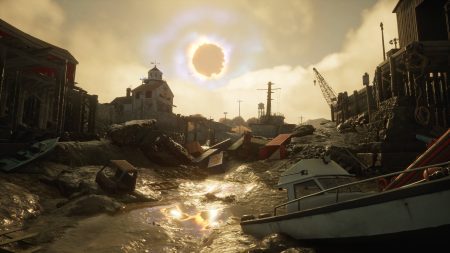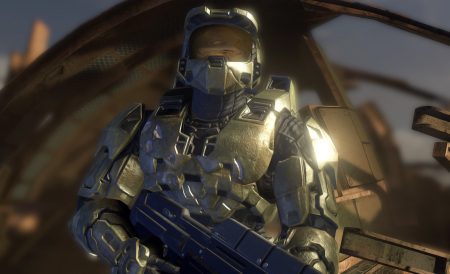Do you ever think back on a video game and remember how it made you feel? It’s a certain kind of nostalgia, a sort of déjà vu happening between your visual memory, your hand coordination, and that sensation in your heart.
I often think about how I felt playing Arkane’s 2012 action-adventure hit Dishonored, using the supernatural power Blink to dash across steampunk Victorian rooftops. I loved the thrill of finding just the right perch to sneak behind guards and swerve around obstacles. My heart beat fast whenever I realized I was about to be caught, and when I used one of my tools or powers to evade notice, I was overwhelmed with satisfaction.
At the beginning of this year, I was feeling overwhelmed, but in a bad way, and I found myself craving something familiar yet challenging. I remembered how much I had loved playing Dishonored on my Xbox 360 in July 2014 as a Games with Gold release (RIP). A few months ago, I went full circle and I re-downloaded Dishonored, this time from Game Pass on Xbox One.
It’s been more than a decade since the first Dishonored was originally released. And let me say: that first game Dishonored still slaps, and the rest of the series is just as delightful. I’m thrilled to induct these games into the Punished Hall of Fame which exists as a way to honor our favorite games and platforms.
Some light spoilers but nothing major spoiled (we believe) for the Dishonored games.
Why Arkane’s Dishonored Series Is So Good
Over the past few months, I’ve made my way through the entire Dishonored story franchise, which includes the original game, plus two pieces of DLC (neither of which I had played before) featuring antagonist Daud; 2016’s Dishonored 2; and 2017’s Dishonored: Death of the Outsider.
Here’s why the Dishonored series still holds up, years later:
The Story
The gameplay is what drew me back into the Dishonored series, but it’s the story that helped keep me there. Especially in the first game, there is a strong emotional pull for you to play as Corvo, the former Royal Protector who has been framed for the murder of his beloved Empress—yes, he is dishonored. As Corvo, you aim to clear your name by finding and punishing those responsible, as well as rescue the Empress’s kidnapped daughter, Emily. It’s a compelling narrative arc that successfully builds drama in with James Bond-esque stakes.

Dishonored games are further enriched by a choice of how to ultimately handle the named targets of each mission: You can violently kill them, or find another way to dispose of them. Some of those “low-chaos” options are cruel in different ways: A monstrous, slaving mine-owner can have his tongue cut out and forced to work in his very same mines.
The Dishonored series gives players a surprising amount of agency in how they decide how to shape the world around them, both in big and small ways. Side quests (which aren’t marked as such; there is no map/mini-map, a rarity for a 2012 game) or even chance conversations with NPCs can reveal heart-wrenching mini-stories that you can affect.
The Gameplay
The combat and movement in Dishonored are equally strong. There are so many different ways to traverse levels: You walk confidently down streets (guns blazing, using a masking power, or after setting off distracting grenades), or sneak through balconies, sewers, and back alleys. You can try to earn the level award “ghost” by not being spotted at all while also playing pretty aggressively by choking out bad dudes along the way. Corvo has a literal arsenal at his disposal of grenades, mines, guns, swords, silent crossbows, and various supernatural gifts.

The Design
The vibes in Dishonored are also on-point. Steampunk environments set against the backdrop of a city-wide plague establish a dark, foreboding mood that invites exploration and curiosity. Whale oil reigns supreme for the region’s energy source, and in dreams, Corvo watches whales float through the skies. When Corvo gains supernatural powers, he also gets access to a dead heart that helps him find useful skill-giving bone charms while telling him secrets about people around him. The Heart is so weird, and it only gets weirder the more you learn about it, but it works. The unique art style—a dreary, blocky watercolor—allows even 2012’s Dishonored to still look good. Daniel Licht’s original scores are haunting and perfect.
Series lead Harvey Smith talked to GQ in 2016 about the experience of Dishonored 2: “[Stealth games] put us in a hostile environment. It’s like visiting a haunted house. It makes you uncomfortable, you don’t really want to do it, but you’re drawn to do it. And somehow at the end of it, you feel like you’ve mastered something that you were afraid of or that made you feel vulnerable.”
When you’re in Dishonored’s Dunwall, you’re in Dunwall. The Dishonored games are ones in which you can get enveloped, but not lost. The missions are designed to have a distinct start and end. In an age of open-world games, I found it refreshing to play games that have clear chapter markers. Those moments became opportunities to say, “Yes, it’s time to stop and do my laundry,” or “Yes, next mission, let’s keep going!”
“The Dishonored games are ones in which you can get enveloped, but not lost.”
As I replayed the Dishonored games, I was again delighted and pleased by the intricacy of the level design. I found myself taking more time just to traverse the levels in detail, marveling at all the different ways that Arkane thought players might like to explore. For a game to really market that sandbox feeling, it has to actually give the illusion that anything is possible. Because ultimately, not anything is possible—it’s a video game. It’s been designed, coded, and shipped with boundaries that cannot be broken without hacks or mods. But there can be the feeling that anything is possible, and the Dishonored games achieve that in spades.
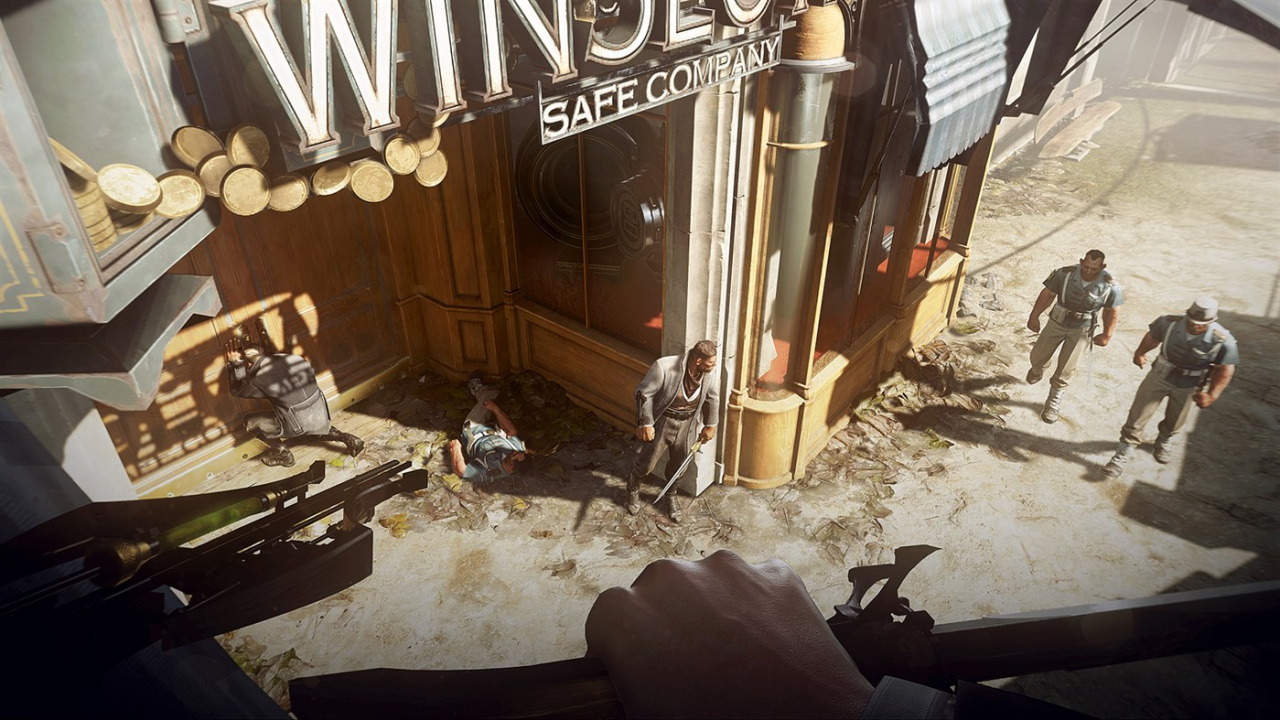
A Closer Look at Each Game in the Dishonored Franchise
That’s not to say the games are perfect. Here’s a bit more on the good (and bad) of each Dishonored title, with minimal spoilers:
Dishonored
For all I’ve written about the original Dishonored, it has its flaws. Look no further than the only female target in the game, Lady Boyle. The Low Chaos non-lethal assassination option is pretty messed up, even as compared to other cruel options. It’s never sat right with me, and apparently it no longer does with series lead Harvey Smith, either.
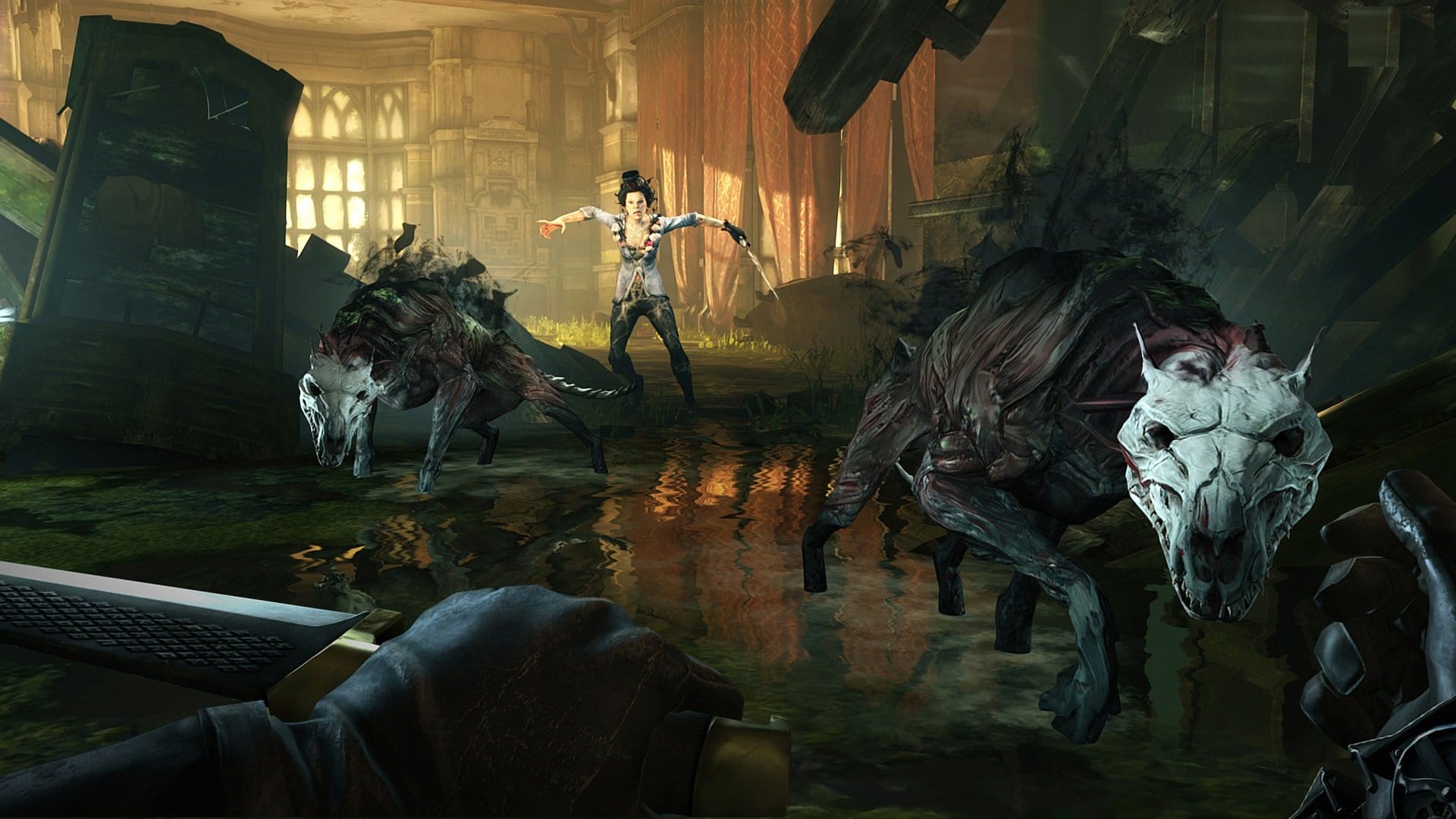
Dishonored’s DLC
The first game’s DLC, Dishonored: Knife of Dunwall (April 2013), and Dishonored: Witches of Brigmore (August 2013) are some of the most thorough DLCs I’ve played. Honestly, calling them DLC feels a bit insulting—the amount of work and play is astounding. What’s more, the stories are absolutely integral to understanding and being invested in Dishonored 2.
I completely missed these the first time around, partially because we were living in the early 2010s’ golden (ha!) era of overpriced, abundant DLC. I understand why DLC exists, including a set like this, but I want to make doubly sure no one else sleeps on them! The good news is that both of these are included in the Dishonored Definitive Edition, which sells for $4.99 on Epic/Steam and is available on Game Pass. Again, a steal, if you’ve never played them.

Dishonored 2
Dishonored 2 lets you play as Empress Emily—now grown-up—or Corvo, though the studio asserts that Emily’s storyline is canon. It’s a joy to see Emily, once a scared little girl, come into her own as she makes her way through Karnaca. She’s a bad ass.
Dishonored 2 has the most innovative level designs of the series. When exploring Aramis Stilton’s Manor, you can literally play with time, bouncing back and forth between the past and present, altering realities as you go (see the image below!). The Clockwork Mansion is a brilliant locked mega-room with an incredibly varied number of ways to get through it.
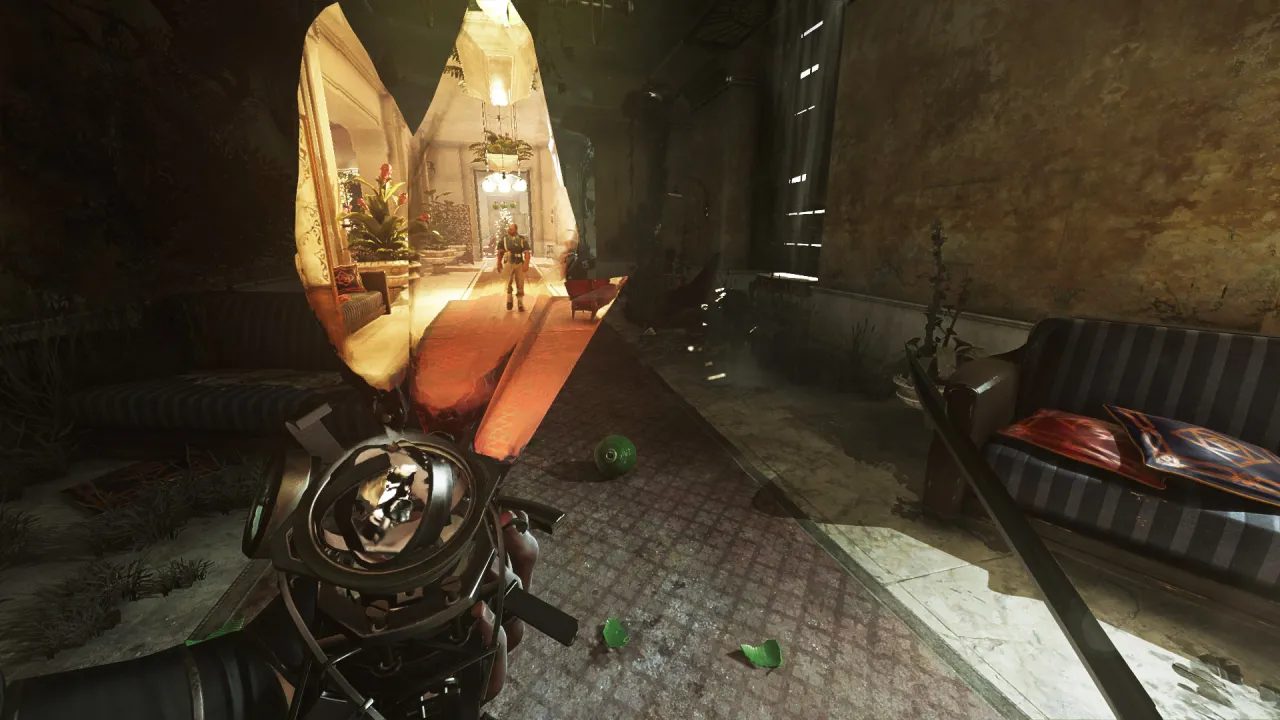
Both of those levels are referenced by industry experts as one of the reasons Dishonored 2 made it on GQ Britain’s Best 100 Video Games list. Furthermore, each non-lethal method for every target is nuanced. I am particularly still haunted (in an impressed “wow, that’s so messed up” way) by the of alternative method to handle Kirin Jindosh.
There are some wonderful allies from Dishonored that, in Dishonored 2 (set about eight years later), literally only receive one line of mention in the first 10 minutes of the game and only by optionally viewing memorabilia. It’s a missed opportunity in a series rich with lore.
Overall, I find that Dishonored 2 lacks some of the emotional punchiness and richness of interpersonal relationships found in the first game. I believe this richness would have existed if the studio hadn’t spent time adding in Corvo as a playable option. The upside, at least, is that it makes the game very replayable by having a separate character journey with his own powers.

Dishonored: Death of the Outsider
Dishonored: Death of the Outsider (2017, released just a year after Dishonored 2! Arkane was working HARD) was billed as a standalone “expansion adventure” but after replaying it, I find that it is essentially a capstone of a trilogy. This time, the player character is Billie Lurk, who has appeared in-and-out of the series as an NPC since the first game’s DLC.
Death of the Outsider is an impressive final (as-of-yet) exploration of the game’s questions for justice, beauty, and connection. Once again, there are all-new levels with new powers and new side missions. But it is clear from the final title cards that, without spoiling anything, Bethesda wanted to keep the option for more Dishonored games on the table. So, perhaps there still is a Dishonored 3 out there somewhere. I’d play the hell out of it.
Dishonored Is Still a Great Game, 10 Years Later
If you’re looking for an excellent set of games to play before blockbusters like Starfield, Tears of the Kingdom, and Arkane’s own Redfall (which is on my fantasy team!) release this year, I highly recommend (re)playing Dishonored. It’s an adventure you won’t forget anytime soon. And, if it’s one you love, you can play another excellent four installments.
For me, Dishonored remains one of my all-time favorite gaming franchises. I think it strikes an incredible balance of story, world-building, and action, all the while never bloating. I cherish the opportunity to glide through the night air across cities with a kind of freedom we normos can only dream of.
What games are you still thinking of? Let us know in the comments below!
Amanda Tien (she/her or they) loves video games where she can pet dogs, punch bad guys, make friends, and have a good cry. She started writing for the site in 2020, and became an editor in 2022. She enjoys writing about mystery games, indies, and strong femme protagonists.
Her work has also been published in Unwinnable Monthly (click here to read her cover feature on Nancy Drew games), Salt Hill Journal, Poets.org, Litro Magazine, Public Books, and more. She was the Co-Founder and Editor-in-Chief of Columbia University's Culinarian Magazine, and served for two years as the Managing Editor of Aster(ix) Literary Journal.
She recently graduated with a MFA (Master of Fine Arts) in Creative Writing from the University of Pittsburgh. Her writing, art, graphic design, and marketing work can be viewed at www.amandatien.com.
She does not post a lot on social, but you can find her on X and on Instagram.









